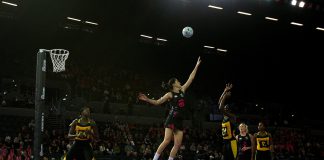When you are at the pool you might see people in the water using a range of equipment, and wonder what the benefits are of using the gear. Training accessories can provide a number of key benefits. When using swim gear correctly, they can isolate muscle groups, improve body position, and alter the intensity of the swim session.
Here at AUT Millennium, we are holding a “try before you buy” week from 2-6 March in the National Aquatic Centre, where you are invited to come in and try out some of the gear to see how you can integrate it into your training. We will have a range of products available for you to try during your swim sessions, along with knowledgeable staff on pool deck to help explain how the gear can be used.
If you have wanted to try swim accessories, but you aren’t quite sure on how to correctly use them, Jacob’s put together a blog series to give you a better understanding and de-mystify swim accessories to help you be the best swimmer you can be!
Pull buoy
Like a kickboard, pull buoys are good for isolating a part of the stroke. By using a pull buoy you restrict your legs and you are able to solely focus on your arms. This can provide an easier alternative to swimming and you will find that your heart rate will not go up as much, however this still provides a good upper body workout.
Pull buoys are often used in longer distance sets and you find yourself clocking up the k’s in no time. Pull buoys allow you to focus on the technique of your arms without having to worry about the technique of your legs.
What to watch out for: Remember that your body position is one of the most important aspects of swimming, and without a good body position, you will struggle to progress as quickly as you would like. Using a pull buoy can inhibit this, so make sure you are always keeping your core tight.
Things to remember:
- Always mix pulling with swimming. i.e. don’t just do pull the whole time.
- Keep your core tight and strong.
- Avoid allowing your legs to swing from side to side and to keep rolling your hips. ????
- Focus on your catch in the water.
- Try to refrain from kicking so that you focus on your arms.
Ways to include a pull buoy:
There are various ways you can incorporate a pull buoy into your sessions. They are a great accessory to accompany with paddles when you are wanting to work your upper body.
Sets which involve paddles and pull buoys are usually longer distances as using a pull buoy and paddles doesn’t get your heartrate up as much as kicking does. You don’t need to use paddles when you use a pull buoy, however you can still get an upper body workout with just the pull buoy alone.
For an advanced workout, place the pull buoy between your ankles and maintain body alignment.
Here are some things to try in the pool:
- 6×100 descending 1 – 3 to max on 1.45 – 2:30.
- 4×200 Pull on 3min – 4min.
- For the more experienced:
- 5×400 descending 1 – 5 on 6min.
- 12×100 pull as 3x fast, 1x easy on 1.45 – 2:30.
A pull buoy can also be a great tool if you are wanting to work on your catch in the water. I suggest trying ‘pull buoy kick’ where you kick on your side in good body position, and try to generate pressure onto the pull buoy whilst you kick along. Be mindful that your elbow needs to be higher that the pull buoy to create the correct position of your arm.
Visit New Zealand’s only Speedo concept store on site at AUT Millennium, or shop at our online store.






































